1. Eurotransplant International Foundation. Eurotransplant annual report 2020. Leiden: Eurotransplant International Foundation;2020.
2. Colvin M, Smith JM, Ahn Y, et al. OPTN/SRTR 2020 Annual Data Report: Heart. Am J Transplant. 2022; 22(Suppl):350–437. PMID:
35266620.

4. Korean Network for Organ Sharing. 2019 KONOS annual report. Seoul: Korean Network for Organ Sharing;2019.
5. Zaroff JG, Rosengard BR, Armstrong WF, et al. Consensus conference report: maximizing use of organs recovered from the cadaver donor: cardiac recommendations, March 28-29, 2001, Crystal City, Va. Circulation. 2002; 106:836–841. PMID:
12176957.
6. Kim JC, Youn JC, Lee SE, Jung SH, Kim JJ. Donor heart utilization in Korea. Int J Heart Fail. 2020; 2:254–263. PMID:
36262172.

7. Kobashigawa J, Zuckermann A, Macdonald P, et al. Report from a consensus conference on primary graft dysfunction after cardiac transplantation. J Heart Lung Transplant. 2014; 33:327–340. PMID:
24661451.

8. Weiss ES, Allen JG, Arnaoutakis GJ, et al. Creation of a quantitative recipient risk Index for Mortality Prediction after Cardiac Transplantation (IMPACT). Ann Thorac Surg. 2011; 92:914–921. PMID:
21871277.

9. Kilic A, Allen JG, Weiss ES. Validation of the United States-derived Index for Mortality Prediction After Cardiac Transplantation (IMPACT) using international registry data. J Heart Lung Transplant. 2013; 32:492–498. PMID:
23474362.

10. Singh SS, Dalzell JR, Berry C, Al-Attar N. Primary graft dysfunction after heart transplantation: a thorn amongst the roses. Heart Fail Rev. 2019; 24:805–820. PMID:
31020451.

11. Choi JO. Use of organ from marginal donor in cardiac transplantation: is it ready for us? Int J Heart Fail. 2020; 2:244–246. PMID:
36262170.

12. Aliabadi-Zuckermann AZ, Gökler J, Kaider A, et al. Donor heart selection and outcomes: an analysis of over 2,000 cases. J Heart Lung Transplant. 2018; 37:976–984. PMID:
29802081.

13. Wang Y, Cai J, Sun Y, et al. Extended donor criteria in heart transplantation: a retrospective study from a single Chinese institution. J Thorac Dis. 2018; 10:2153–2165. PMID:
29850119.

14. Galeone A, Lebreton G, Coutance G, et al. A single-center long-term experience with marginal donor utilization for heart transplantation. Clin Transplant. 2020; 34:e14057. PMID:
32757285.

15. Bifulco O, Bottio T, Caraffa R, et al. Marginal versus standard donors in heart transplantation: proper selection means heart transplant benefit. J Clin Med. 2022; 11:2665. PMID:
35566789.

16. Lima B, Rajagopal K, Petersen RP, et al. Marginal cardiac allografts do not have increased primary graft dysfunction in alternate list transplantation. Circulation. 2006; 114:I27–32. PMID:
16820584.

17. Chen JM, Russo MJ, Hammond KM, et al. Alternate waiting list strategies for heart transplantation maximize donor organ utilization. Ann Thorac Surg. 2005; 80:224–228. PMID:
15975371.

18. Rajagopalan N, Shafii AE, Dennis DR, Charnigo R, Sekela ME. Increasing heart transplant volume by expansion of donor heart selection criteria: a single-center analysis. Transplant Proc. 2020; 52:949–953. PMID:
32143873.

19. Trivedi JR, Cheng A, Ising M, Lenneman A, Birks E, Slaughter MS. Heart transplant survival based on recipient and donor risk scoring: a UNOS database analysis. ASAIO J. 2016; 62:297–301. PMID:
26771395.

20. Sathianathan S, Bhat G. Heart transplant donor selection guidelines: review and recommendations. Curr Cardiol Rep. 2022; 24:119–130. PMID:
35179716.

21. Taylor DO, Edwards LB, Aurora P, et al. Registry of the International Society for Heart and Lung Transplantation: twenty-fifth official adult heart transplant report--2008. J Heart Lung Transplant. 2008; 27:943–956. PMID:
18765186.

22. Blanche C, Kamlot A, Blanche DA, et al. Heart transplantation with donors fifty years of age and older. J Thorac Cardiovasc Surg. 2002; 123:810–815. PMID:
11986611.

23. Hong KN, Iribarne A, Worku B, et al. Who is the high-risk recipient? Predicting mortality after heart transplant using pretransplant donor and recipient risk factors. Ann Thorac Surg. 2011; 92:520–527. PMID:
21683337.

24. Daniel M, Chen C, Chung J, Goldberg L, Acker MA, Atluri P. Interaction of donor and recipient age: do older heart transplant recipients require younger hearts? Ann Thorac Surg. 2019; 107:62–66. PMID:
30172858.

25. World Health Organization. World Health Statistics 2021. Geneva: World Health Organization;2021.
26. Khush KK, Cherikh WS, Chambers DC, et al. The international thoracic organ transplant registry of the International Society for Heart and Lung Transplantation: thirty-fifth Adult Heart Transplantation Report-2018; Focus Theme: Multiorgan transplantation. J Heart Lung Transplant. 2018; 37:1155–1168. PMID:
30293612.

27. Dujardin KS, McCully RB, Wijdicks EF, et al. Myocardial dysfunction associated with brain death: clinical, echocardiographic, and pathologic features. J Heart Lung Transplant. 2001; 20:350–357. PMID:
11257562.

28. Madan S, Saeed O, Vlismas P, et al. Outcomes after transplantation of donor hearts with improving left ventricular systolic dysfunction. J Am Coll Cardiol. 2017; 70:1248–1258. PMID:
28859788.

29. Anwar AS, Lee JM. Medical management of brain-dead organ donors. Acute Crit Care. 2019; 34:14–29. PMID:
31723901.

30. Lund LH, Khush KK, Cherikh WS, et al. The registry of the International Society for Heart and Lung Transplantation: thirty-fourth Adult Heart Transplantation Report-2017; Focus Theme: Allograft ischemic time. J Heart Lung Transplant. 2017; 36:1037–1046. PMID:
28779893.

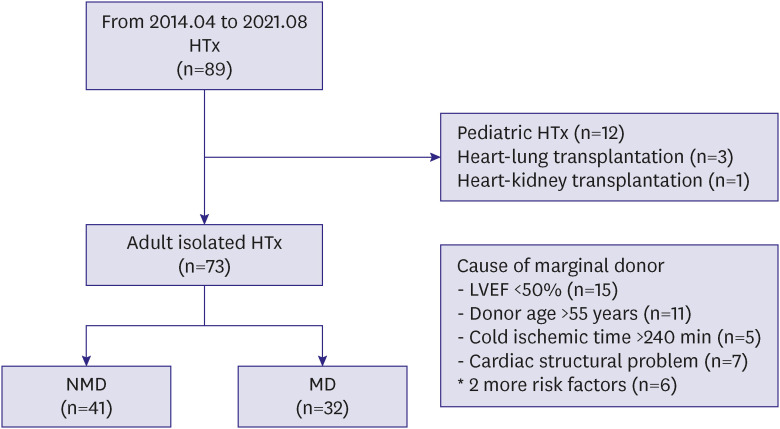
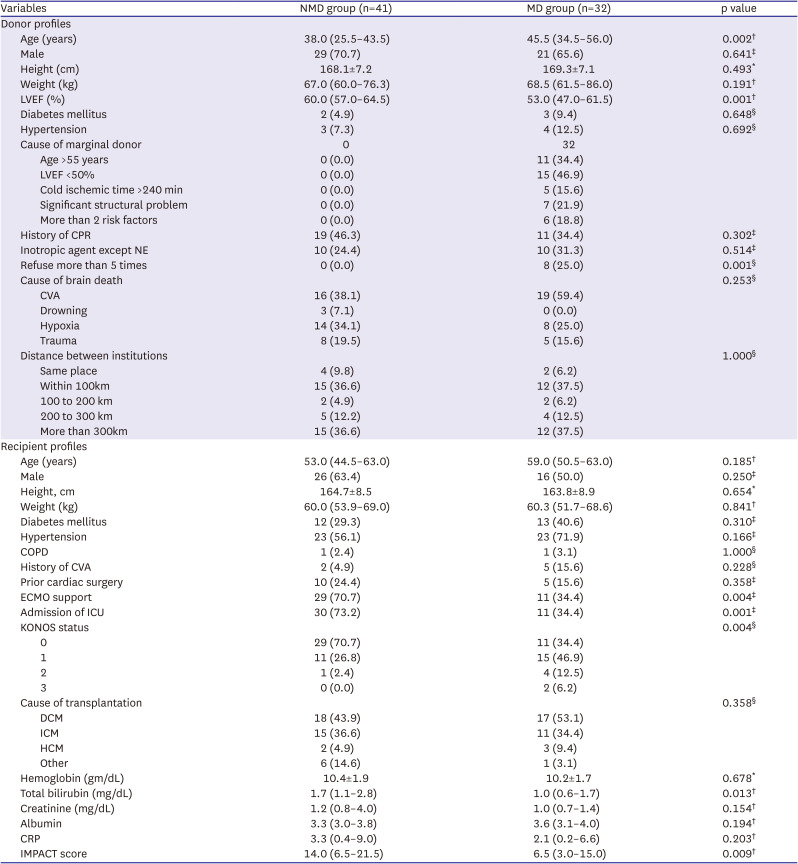
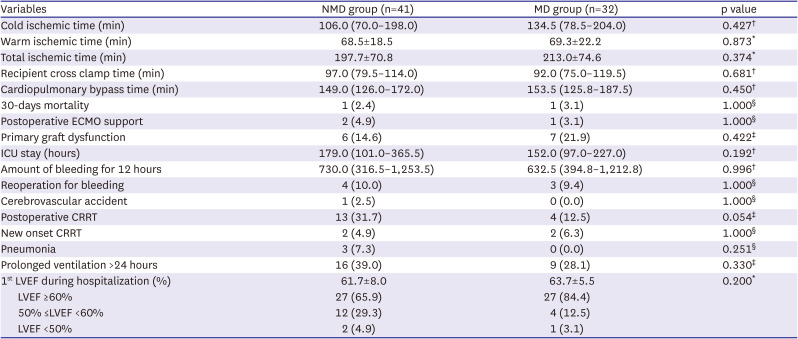
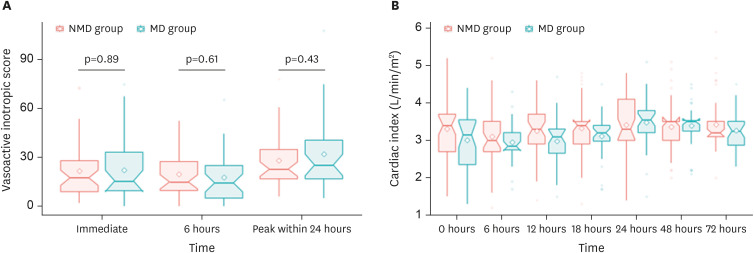
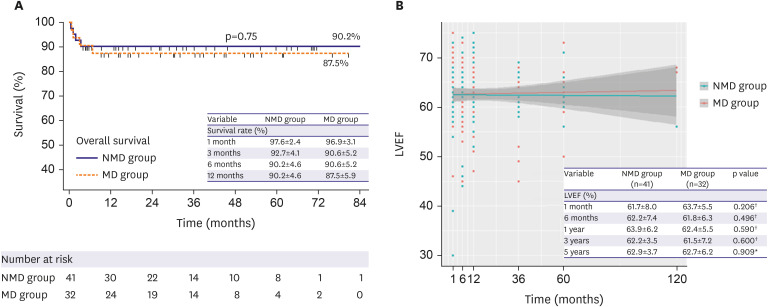
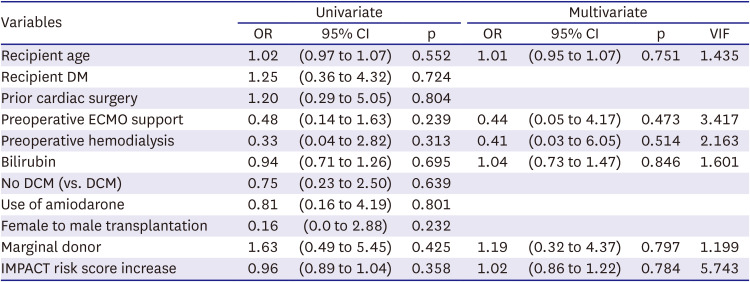

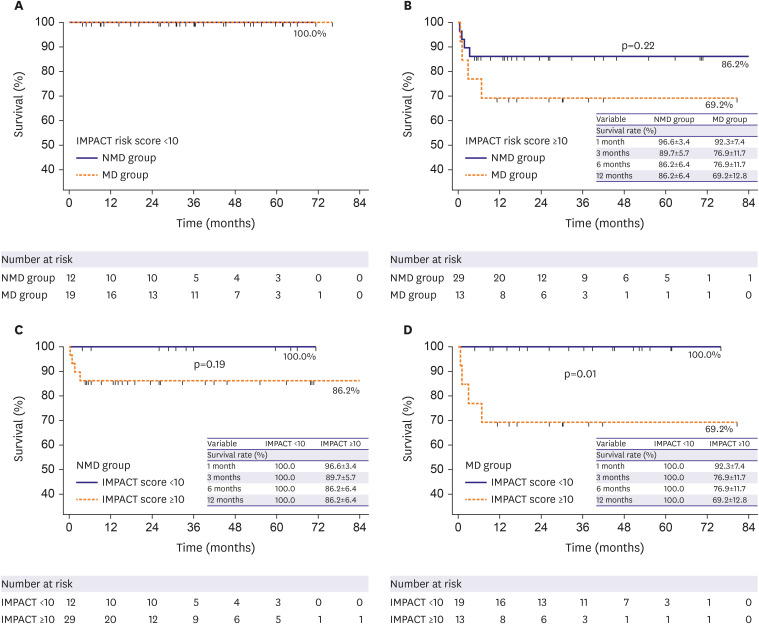




 PDF
PDF Citation
Citation Print
Print



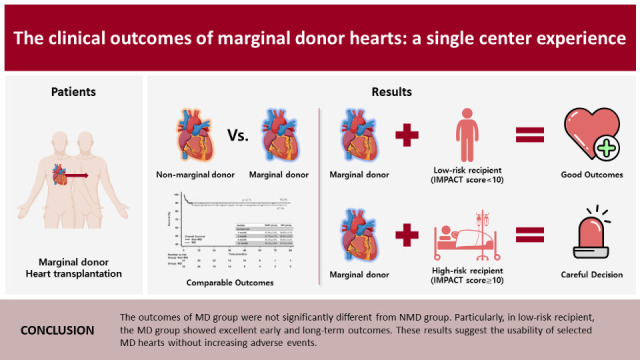
 XML Download
XML Download